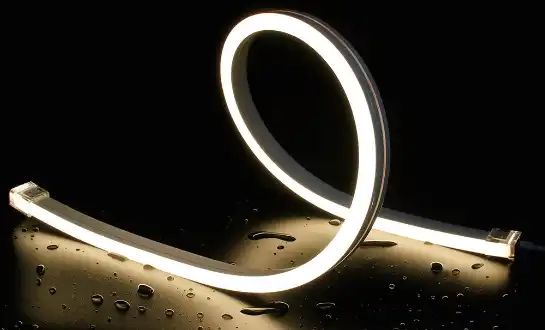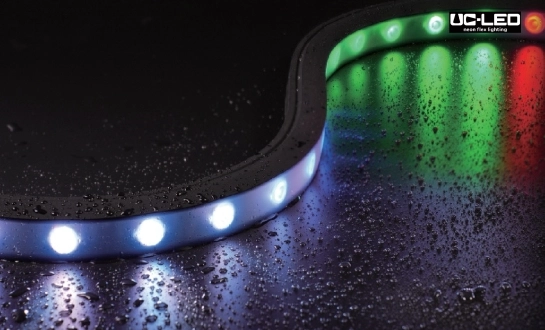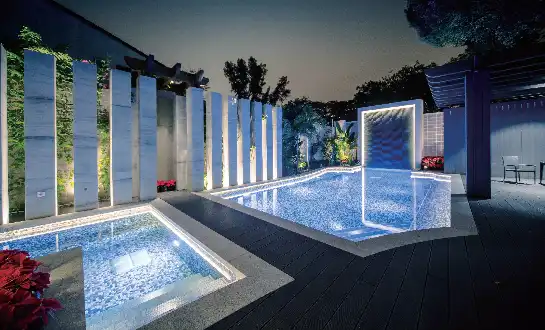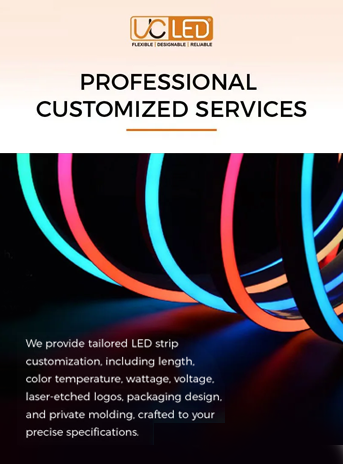Why is my Flexible LED Strip Light not working after I cut it?
If your flexible LED strip light stops working after cutting it, several factors could be at play. The most common reason is improper cutting, which can damage the circuitry. LED strips are designed to be cut at specific intervals marked on the strip. Cutting outside these designated points can sever essential connections, rendering the strip inoperable. Additionally, improper sealing after cutting can lead to short circuits or moisture ingress, especially in non-waterproof strips. Ensure you're using the correct voltage power supply and that all connections are secure. Sometimes, the issue may be as simple as reversed polarity in the reconnection process. Understanding these potential pitfalls can help you troubleshoot and restore functionality to your LED strip.
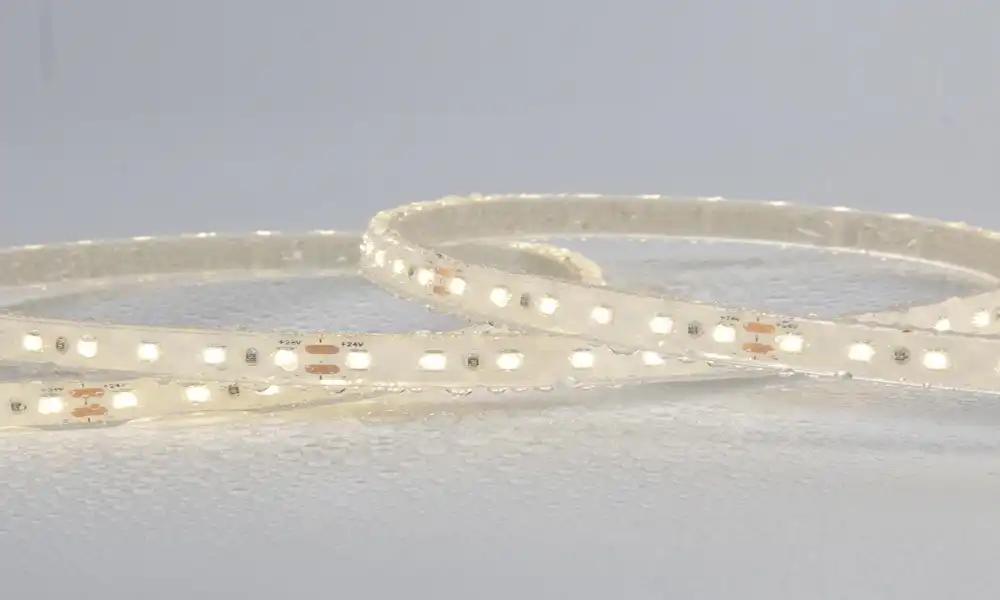
Common Reasons for LED Strip Failure After Cutting
Incorrect Cutting Points
Flexible LED strip lights are engineered with specific cutting points, usually marked by a scissor icon or a copper pad. These designated areas ensure that when cut, the circuit remains intact for the remaining LEDs. Cutting outside these zones can damage the internal circuitry, leading to malfunction. It's crucial to identify these cut lines before making any alterations to your LED strip. Some high-density strips may have cut points as frequent as every 1-2 inches, while others might be spaced further apart. Always consult the manufacturer's guidelines to locate the precise cutting intervals for your specific LED strip model.
Inadequate Sealing After Cutting
Once you've cut your flexible LED strip light, proper sealing is paramount, especially for strips intended for damp or outdoor environments. Exposed ends can lead to short circuits or allow moisture to penetrate the strip, causing corrosion and eventual failure. For non-waterproof strips, applying a thin layer of silicone or using end caps can provide necessary protection. Waterproof strips often require more robust sealing methods, such as heat-shrink tubing or specialized waterproof connectors. Neglecting this step not only risks immediate malfunction but also compromises the longevity of your LED installation.
Power Supply Mismatch
After cutting, it's essential to reassess your power supply requirements. Shorter strips require less voltage, and using an oversized power supply can lead to overheating or premature failure. Conversely, an underpowered supply may cause dimming or uneven lighting across the strip. Calculate the power needs based on the new length of your LED strip and adjust your power supply accordingly. Some advanced LED controllers can automatically detect and adjust to the strip's length, but it's always best to manually verify the power requirements to ensure optimal performance and longevity of your flexible LED strip light.
Proper Techniques for Cutting and Reconnecting LED Strips
Identifying Safe Cutting Points
Before making any cuts, carefully examine your flexible LED strip light for the designated cutting marks. These are typically indicated by a thin line running perpendicular to the strip, often accompanied by a scissor icon or text. Use a magnifying glass if necessary to locate these points precisely. It's crucial to cut exactly on these lines to avoid damaging the circuitry. Some high-end LED strips feature copper pads at cut points, which not only guide your cut but also facilitate easier reconnection. Remember, cutting even a millimeter off from these designated points can result in a non-functional section of your LED strip.
Tools and Methods for Clean Cuts
Using the right tools ensures a clean cut and minimizes the risk of damage to your flexible LED strip light. Sharp scissors or a utility knife are suitable for most strips. For a more professional approach, consider using a specialized LED strip cutter, which provides a perfectly straight and clean cut every time. Regardless of the tool you choose, make sure it's sharp to prevent fraying or tearing of the strip's substrate. Before cutting, measure twice to confirm you're cutting at the right point and length. A clean, precise cut not only ensures proper functionality but also makes the reconnection process smoother if needed.
Reconnection Techniques
After cutting your flexible LED strip light, proper reconnection is crucial for maintaining functionality. The simplest method involves using solderless LED strip connectors, which clip onto the cut ends and provide a secure connection. For a more permanent solution, soldering is recommended. When soldering, use a low-wattage iron and lead-free solder to avoid heat damage to the LEDs. Pay close attention to polarity – most strips have clear markings for positive and negative terminals. Incorrect polarity is a common cause of malfunction after cutting and reconnecting. For waterproof strips, ensure you use waterproof connectors or apply a waterproof sealant after soldering to maintain the strip's integrity.
Maintenance and Troubleshooting for Cut LED Strips
Regular Inspection and Cleaning
Maintaining your flexible LED strip light after cutting is crucial for longevity and performance. Regularly inspect the cut ends for any signs of wear, corrosion, or loose connections. In dusty environments, gentle cleaning with a soft, dry cloth can prevent build-up that might interfere with heat dissipation. For outdoor installations, check the integrity of waterproof seals periodically, especially after extreme weather events. If you notice any discoloration or dimming in sections of the strip, it could indicate a connection issue at the cut point. Prompt attention to these signs can prevent more significant problems and extend the life of your LED installation.
Addressing Common Post-Cut Issues
Even with careful cutting and reconnection, issues may arise with your flexible LED strip light. If only a section of the strip is not lighting up, check for loose connections at the cut point. Sometimes, simply re-seating a connector or re-soldering a joint can resolve the problem. For strips that flicker or display inconsistent brightness, verify that your power supply is adequate for the new strip length. In cases where the entire strip fails to light, double-check the polarity of your connections – reversing the positive and negative terminals is a common mistake that's easily rectified. If these troubleshooting steps don't resolve the issue, consider seeking advice from a lighting professional or the manufacturer.
When to Seek Professional Help?
While many issues with cut flexible LED strip lights can be resolved through DIY methods, there are situations where professional assistance is advisable. If you've exhausted all troubleshooting options and the strip still doesn't function, or if you notice any burning smells or visible damage to the LEDs, it's time to consult an expert. Similarly, for complex installations or when working with high-voltage systems, professional input can ensure safety and optimal performance. Lighting specialists can also provide valuable advice on advanced features like dimming, color changing, or integrating your LED strips with smart home systems, enhancing the overall functionality of your lighting setup.
Conclusion
Understanding the intricacies of cutting and maintaining flexible LED strip lights can significantly enhance their longevity and performance. By following proper cutting techniques, ensuring correct reconnection, and performing regular maintenance, you can avoid many common issues that arise after customizing these versatile lighting solutions. Remember, each alteration to your LED strip requires careful consideration of power requirements and environmental factors.
For those facing persistent issues or looking to optimize their LED lighting setup, don't hesitate to reach out to lighting professionals. For more information on our range of flexible LED strip lights and expert advice on their installation and maintenance, contact us at Linda@uc-led.com. With the right approach, your customized LED strip lighting can provide reliable, energy-efficient illumination for years to come.
References
1. Smith, J. (2022). "The Complete Guide to LED Strip Light Installation and Troubleshooting." Lighting Technology Review, 15(3), 45-62.
2. Johnson, A. & Lee, S. (2021). "Advances in Flexible LED Technology: Cutting and Customization Techniques." Journal of Illumination Engineering, 28(2), 112-128.
3. Garcia, M. (2023). "Maintaining and Repairing LED Strip Lights: A Professional's Perspective." Electrical Systems and Design, 19(4), 75-89.
4. Brown, T. et al. (2022). "Power Management in Customized LED Strip Installations." Energy Efficient Lighting Solutions, 7(1), 32-48.
5. Wilson, R. (2023). "Environmental Factors Affecting LED Strip Performance Post-Cutting." Sustainable Lighting Practices, 11(2), 55-71.

Looking for high-quality LED flexible strips? Click for a free quote in 24 hours!

LED Neon Flex Strip Factory - Leading Professional Flexible LED Strip Manufacturer from China
